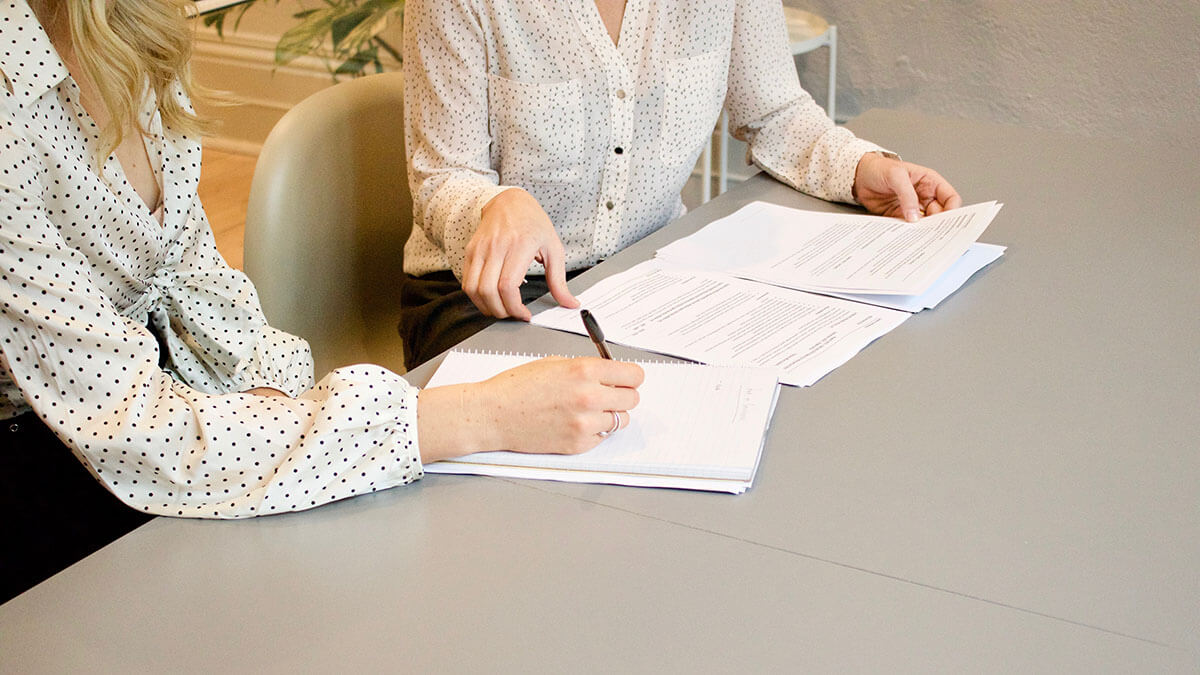When you’re buying a home, one crucial document often gets overlooked in the whirlwind of paperwork: the Closing Disclosure. This detailed form is your final, official summary of all the key financial terms, fees, and payments involved in your home purchase. It lays out everything you need to know before you close the deal.
Understanding the Closing Disclosure isn’t just important—it’s essential to avoid unexpected surprises at closing. Many buyers find discrepancies or last-minute changes that could cost them thousands or delay their homeownership dream. Knowing how to review and interpret this document can save you time, money, and stress.
At iBuyer.com, we simplify the home-selling process and ensure you’re informed every step of the way. Whether you’re selling or buying, our goal is to make real estate transactions smooth and stress-free.
Compare Cash Offers from Top Home Buyers. Delivered by Your Local iBuyer Certified Specialist.
One Expert, Multiple Offers, No Obligation.
Closing Disclosure
What is a Closing Disclosure?
A Closing Disclosure is a five-page document that provides a comprehensive breakdown of your mortgage loan details. Think of it as the final summary of everything you’re agreeing to financially when buying a home.
It includes vital information about your loan terms, projected payments, and all associated closing costs. This document ensures there are no surprises on closing day, giving you one last chance to review everything before signing.
Federal law mandates that lenders must provide the Closing Disclosure at least three business days before closing. This time frame is designed to give you enough time to review the terms, compare them with your Loan Estimate, and flag any discrepancies or errors.
Key Sections of the Closing Disclosure
The Closing Disclosure is packed with details, but understanding its key sections makes reviewing it much easier. Let’s break it down:
1. Loan Terms
This section outlines the heart of your mortgage agreement:
- Loan Amount: The total amount you’re borrowing. Double-check this against your expectations.
- Interest Rate: Your fixed or adjustable rate, which determines your monthly payment.
- Loan Term: The length of your loan, typically 15 or 30 years.
2. Projected Payments
Here, you’ll find a detailed breakdown of your monthly payments over the loan term:
- Principal and Interest: What you’re paying toward the loan balance and lender’s interest.
- Escrow Payments: Includes taxes and insurance, if applicable. Confirm these align with your estimates.
3. Closing Costs
This part itemizes all fees and costs associated with your loan. Expect to see:
- Lender Fees: Origination fees, underwriting costs, and more.
- Third-Party Fees: Appraisals, title searches, and other services.
- Prepaids: Taxes and insurance paid upfront.
4. Loan Calculations
Ever wonder what your loan will truly cost over time? This section reveals:
- Total Payments: What you’ll pay over the life of the loan, including interest.
- Finance Charges: The cost of borrowing, such as interest and fees.
- Amount Financed: The loan principal minus prepaid fees.
5. Contact Information
This page lists the names and details of your lender, settlement agent, and other involved parties. It’s your go-to resource if you have questions or need to raise concerns.
How to Review Your Closing Disclosure
Carefully reviewing your Closing Disclosure is critical to avoid errors and surprises at closing. Follow these steps to ensure everything checks out:
1. Verify Personal Information
Start with the basics:
- Confirm that your name, address, and other personal details are correct.
- Even small errors can cause delays, so ensure this information matches your other documents.
2. Compare with Your Loan Estimate
Your Loan Estimate (provided earlier in the process) acts as a preliminary version of the Closing Disclosure:
- Spot Differences: Compare the two documents side by side. Look for changes in interest rates, loan amounts, or fees.
- Check for Justifications: Ask your lender to explain any increases or new charges.
3. Scrutinize Loan Terms
Ensure that the loan terms meet your expectations:
- Double-check the interest rate, loan amount, and payment schedule.
- Confirm there are no prepayment penalties unless previously agreed upon.
4. Review Closing Costs
Examine this section closely for errors or unnecessary charges:
- Confirm third-party fees like appraisals and title insurance match your estimates.
- Be wary of unfamiliar fees, and don’t hesitate to ask for explanations.
5. Ask Questions
If anything feels off, reach out to your lender or settlement agent immediately:
- You have a right to clear answers and adjustments if discrepancies are found.
- Use the three-day review period wisely to address concerns without delaying the closing.
Common Mistakes to Avoid
Even seasoned homebuyers can overlook details in their Closing Disclosure, leading to costly mistakes. Here are the most common pitfalls and how to sidestep them:
1. Overlooking Discrepancies
Failing to compare your Closing Disclosure with your Loan Estimate can lead to unexpected costs.
- What to Do: Review both documents side by side and flag any differences. Unexpected fees or rate changes should be explained by your lender.
2. Ignoring Unfamiliar Charges
Sometimes, fees like “processing fees” or “administrative charges” sneak into your closing costs.
- What to Do: Ask about every charge you don’t recognize. Some fees may be negotiable or even unnecessary.
3. Rushing Through the Review
With so much going on before closing, many buyers skim through the Closing Disclosure.
- What to Do: Use the full three-day review period to go through the document line by line. Enlist the help of your lender or real estate agent if needed.
4. Forgetting to Confirm Escrow Details
Escrow accounts cover property taxes and insurance, but errors can lead to underpayment or overpayment.
- What to Do: Verify the amounts listed for taxes and insurance, ensuring they’re accurate and aligned with your expectations.
5. Missing the Deadline for Corrections
If you wait until the last minute to raise concerns, there may not be enough time to address them.
- What to Do: Start reviewing as soon as you receive the document to allow time for adjustments before closing day.
Reilly’s Two Cents
Let me share a personal story to highlight the importance of paying attention to the details in your Closing Disclosure. When I bought my first home, I thought I’d done everything right—until I noticed a small, unexplained fee during my review. It turned out to be an error, but if I hadn’t flagged it, I would’ve paid an extra $800. That experience taught me a valuable lesson: always read the fine print.
Here are my actionable tips to ensure you’re well-prepared:
1. Start Reviewing Immediately
As soon as your Closing Disclosure arrives, carve out time to review it thoroughly.
- Use the three-day window wisely to address questions or errors.
- The earlier you identify issues, the easier it is to correct them without delaying your closing.
2. Use a Highlighter for Key Details
Break down the document with a highlighter:
- Mark terms, figures, or fees that don’t align with your expectations.
- Highlighting makes it easier to revisit flagged areas during follow-ups with your lender or agent.
3. Don’t Hesitate to Ask Questions
Lenders and real estate agents are there to help, so don’t be shy:
- Ask about anything you don’t understand, from unfamiliar terms to fees.
- Remember, clarity now can save you money and stress later.
Mistakes happen, even on crucial documents like the Closing Disclosure. But by being proactive, you can protect your investment and ensure a smooth closing process.
Conclusion
The Closing Disclosure is more than just paperwork—it’s the key to understanding the financial details of your home purchase. Taking the time to review it thoroughly helps you avoid costly surprises, ensures all terms match your expectations, and sets the stage for a smooth closing day.
Remember, this document is your final opportunity to confirm everything is accurate before signing on the dotted line. By reviewing each section carefully, comparing it with your Loan Estimate, and addressing any discrepancies, you take control of the process and protect your investment.
At iBuyer.com, we believe informed homeowners make better decisions. That’s why we’re here to guide you through every step of the real estate journey, whether you’re buying or selling. Need help or have questions? Our team is just a click away.
Take charge of your home-buying process—start with a Closing Disclosure review you can trust!
Instant Valuation, Confidential Deals with a Certified iBuyer.com Specialist.
Sell Smart, Sell Fast, Get Sold. No Obligations.
FAQ
If you spot an error, notify your lender or settlement agent immediately. They’re required to provide an accurate document, and corrections can typically be made before closing day. Review the changes thoroughly before proceeding.
In most cases, no. However, if changes occur due to a significant event—such as a last-minute interest rate adjustment or altered loan terms—you’ll receive a revised Closing Disclosure. This triggers an additional three-day review period.
The Loan Estimate is an early, approximate breakdown of your loan terms and costs. The Closing Disclosure is the final, accurate version of those terms. Use the Loan Estimate as a comparison tool when reviewing your Closing Disclosure.
Closing costs are determined by a mix of lender, third-party, and government fees. While some are fixed, like taxes, others—such as lender fees—may be negotiable. Always ask your lender to explain fees and explore opportunities for negotiation.
Don’t ignore it! Ask your lender or settlement agent for clarification. It’s your right to fully understand every charge before committing to the loan. Ignoring unclear fees could cost you in the long run.
Reilly Dzurick is a seasoned real estate agent at Get Land Florida, bringing over six years of industry experience to the vibrant Vero Beach market. She is known for her deep understanding of local real estate trends and her dedication to helping clients find their dream properties. Reilly’s journey in real estate is complemented by her academic background in Public Relations, Advertising, and Applied Communication from the University of North Florida.




